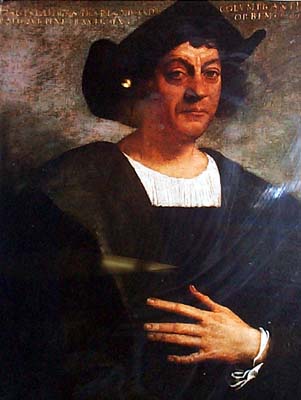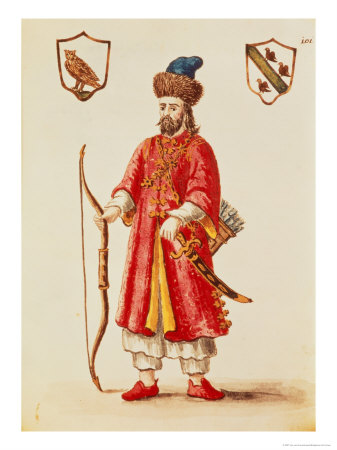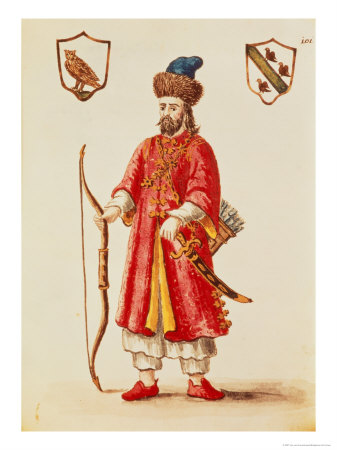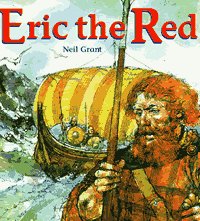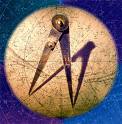World Exploration Trivia Quiz For 5th Grade!
(12).jpg)
.
- 1.
On his second voyage, Columbus landed on what Island?
- A.
Newfoundland
- B.
Hispaniola
- C.
Greenland
- D.
Cuba
Correct Answer
B. HispaniolaExplanation
On his second voyage, Columbus landed on Hispaniola. This is historically accurate as Columbus made four voyages to the Americas, and during his second voyage in 1493, he arrived at the island of Hispaniola, which is now shared by the countries of Haiti and the Dominican Republic.Rate this question:
-
- 2.
The wars to Capture Jerusalem from the Muslim Turks was called
Correct Answer
Crusades
The CrusadesExplanation
The wars to capture Jerusalem from the Muslim Turks were known as the Crusades. This series of military campaigns was initiated by the Christians in Europe in the 11th to 13th centuries. The goal of the Crusades was to regain control of the Holy Land, particularly Jerusalem, which was considered a sacred city by Christians. The Crusades had a significant impact on European society, politics, and culture, and they marked a period of intense religious fervor and conflict between Christians and Muslims.Rate this question:
- 3.
The merchant who returned from China to Venice in 1295 and described his travels was...
- A.
Vasco da Gama
- B.
Marco Polo
- C.
Fernando Magellan
- D.
Cristopher Columbus
Correct Answer
B. Marco PoloExplanation
Marco Polo is the correct answer because he was a merchant from Venice who traveled to China in 1271 and returned to Venice in 1295. He wrote a book called "The Travels of Marco Polo" which described his experiences and introduced Europeans to the wonders of the East. His book became widely popular and influenced future explorers and traders, making him well-known for his travels and descriptions of China.Rate this question:
-
- 4.
Marco Polo was 17 when the family left for China and 43 when he returned to Venice.
- A.
True
- B.
False
Correct Answer
A. TrueExplanation
The statement is true because it states that Marco Polo was 17 years old when his family left for China and 43 years old when he returned to Venice. This implies that he spent a significant amount of time in China, which aligns with historical records of his travels and adventures in the East.Rate this question:
-
- 5.
The first Europeans to reach America are believed to be ...
- A.
The Vikings in 11th century
- B.
Italian merchants in 14 century
- C.
Christopher Columbus in 1492
- D.
Amerigo Vespucci
Correct Answer
A. The Vikings in 11th centuryExplanation
The correct answer is the Vikings in the 11th century. According to historical records and archaeological evidence, it is believed that Norse Viking explorers, led by Leif Erikson, reached North America around the year 1000, almost 500 years before Christopher Columbus. They established a short-lived settlement called Vinland in present-day Newfoundland, Canada. This discovery predates the arrival of Italian merchants and Christopher Columbus by several centuries, making the Vikings the first Europeans to reach America. Amerigo Vespucci, on the other hand, was an Italian explorer who explored parts of South America in the late 15th and early 16th centuries, but he did not reach North America.Rate this question:
-
- 6.
Why was Africa a favorite merchant destination in the 14-15th century?
- A.
Africa was rich in natural resources
- B.
Africa was rich in salt
- C.
Africa was rich in gold
- D.
Africa was poor and needed help
Correct Answer(s)
A. Africa was rich in natural resources
B. Africa was rich in salt
C. Africa was rich in goldExplanation
In the 14-15th century, Africa was a favorite merchant destination because it was rich in natural resources, salt, and gold. These resources were highly valued and in demand in other parts of the world. Africa's abundance of natural resources made it an attractive destination for merchants who sought to trade and profit from these valuable commodities. Additionally, Africa's vast reserves of salt and gold further enhanced its appeal as a merchant destination, as these were highly sought-after commodities in global trade during that time.Rate this question:
-
- 7.
Prince Henry of what country set up navigation school in 15the century?
- A.
Britain
- B.
Spain
- C.
Portugal
- D.
France
Correct Answer
C. PortugalExplanation
Prince Henry of Portugal set up a navigation school in the 15th century. This school, known as the School of Navigation, was established in Sagres, Portugal. Prince Henry, also known as Henry the Navigator, was a key figure in promoting and advancing maritime exploration. Through his school, he encouraged the study of navigation, cartography, and shipbuilding, which ultimately led to Portugal's significant contributions to the Age of Discovery.Rate this question:
-
- 8.
Navigation is a scientific discipline studying ...
- A.
The weather patterns in the world
- B.
The ways of finding direction and following routs at seas
- C.
Technical issues of shipbuilding
- D.
Describing the surface of the Earth
Correct Answer
B. The ways of finding direction and following routs at seasExplanation
Navigation is the scientific discipline that focuses on finding direction and following routes at seas. It involves the study and understanding of various techniques, tools, and methods used to determine one's position and navigate through water bodies. This includes using instruments like compasses, charts, and celestial navigation to plot courses, calculate distances, and ensure safe and accurate navigation. Navigation plays a crucial role in maritime activities such as shipping, fishing, and exploration, as it ensures efficient and safe passage on the seas.Rate this question:
-
- 9.
What are some tools for practical navigation?
- A.
Compass
- B.
Maps
- C.
Star maps
- D.
Merchants financial records
Correct Answer(s)
A. Compass
B. Maps
C. Star mapsExplanation
The tools mentioned in the answer, compass, maps, and star maps, are commonly used for practical navigation. A compass helps in determining direction by pointing towards the Earth's magnetic north. Maps provide a visual representation of the terrain and help in planning routes. Star maps assist in celestial navigation by identifying stars and constellations for orientation. These tools are essential for travelers, hikers, sailors, and anyone who needs to navigate through unfamiliar territories. The mention of merchant's financial records seems irrelevant to practical navigation and can be disregarded.Rate this question:
-
- 10.
In 1488 who was the first European to travel around the southern tip of Africa, the Cape of Good Hope?
- A.
Bartolomeu Dias
- B.
Vasco da Gama
- C.
Fernando Magellan
- D.
Marco Polo
Correct Answer
A. Bartolomeu DiasExplanation
Bartolomeu Dias was the first European to travel around the southern tip of Africa, the Cape of Good Hope. He embarked on this journey in 1488, opening up a new sea route to Asia for European explorers. This achievement was significant as it paved the way for future explorers, such as Vasco da Gama, to establish direct trade links with India and other Asian countries. Fernando Magellan and Marco Polo are not associated with this particular voyage.Rate this question:
-
- 11.
A line of latitude on the map is called a...
Correct Answer
parallelExplanation
A line of latitude on the map is called a parallel because it is an imaginary circle that runs parallel to the equator. These lines are used to measure the distance north or south of the equator and are equally spaced from each other. They help in locating places on the Earth's surface and are essential for navigation and determining time zones.Rate this question:
- 12.
A line of longtitude on the map is called a...
Correct Answer
meridianExplanation
A line of longitude on the map is called a meridian. Meridians are imaginary lines that run from the North Pole to the South Pole, connecting all points with the same longitude. They are used to measure and indicate the east-west position of any location on Earth. Meridians are crucial in determining time zones and are commonly used in navigation and cartography.Rate this question:
- 13.
The Equator is how many degrees latitude?
Correct Answer
0Explanation
The Equator is located at 0 degrees latitude. It is an imaginary line that divides the Earth into the Northern Hemisphere and the Southern Hemisphere. It is the starting point for measuring latitude, which is the distance north or south of the Equator. Therefore, the correct answer is 0.Rate this question:
- 14.
A line of longitude with 0 degrees longitude is called the...
- A.
Equator
- B.
Prime Meridian
- C.
Zero meridian
- D.
Eastern meridian
Correct Answer
B. Prime MeridianExplanation
The line of longitude with 0 degrees longitude is called the Prime Meridian. This line divides the Earth into the Eastern and Western Hemispheres and serves as the reference point for measuring longitude. It runs through Greenwich, London, and is used as the starting point for calculating time zones around the world.Rate this question:
-
- 15.
What did the Europeans call the Indies?
- A.
India
- B.
Asia
- C.
China
- D.
Indochina
Correct Answer
B. AsiaExplanation
The Europeans called the Indies "Asia" because they mistakenly believed that they had reached the eastern coast of Asia when they first arrived in the region. They thought they had reached the Indies, which were believed to be islands off the coast of Asia. This misconception led to the term "East Indies" being used to refer to the region, and eventually it became common to refer to the entire continent as Asia.Rate this question:
-
- 16.
Which were common travel destinations before Columbus?
- A.
Mediterranian Sea
- B.
Black Sea
- C.
South around Africa in the Atlantic
- D.
Across the Atlantic Ocean to the West
- E.
Indian Ocean
Correct Answer(s)
A. Mediterranian Sea
B. Black Sea
C. South around Africa in the Atlantic
E. Indian OceanExplanation
Trade flourished in the Mediterranian from the times before written history; Black Sea was a popular destination for merchants starting from Ancient Greece or maybe earlier; sailors managed to travel around Africa before Columbus traveled across Atlantic to the west.Rate this question:
-
- 17.
Columbus's voyage was paid for by King Ferdinand and Queen Isabella of what country?
- A.
Spain
- B.
Italy
- C.
France
- D.
Portugal
Correct Answer
A. SpainExplanation
Columbus's voyage was paid for by King Ferdinand and Queen Isabella of Spain. Spain sponsored Columbus's expedition in the hopes of finding a new trade route to Asia and expanding their empire. They were seeking to increase their wealth and power, and believed that Columbus's voyage had the potential to achieve this. By financing his journey, Spain took a significant risk that ultimately led to the discovery of the Americas and the establishment of Spanish colonies in the New World.Rate this question:
-
- 18.
What was the year of Columbus's voyage?
Correct Answer
1492Explanation
In 1492, Columbus embarked on his historic voyage. This was the year when he set sail from Spain in search of a new route to Asia, but instead ended up discovering the Americas. Columbus's voyage in 1492 is a significant event in history as it marked the beginning of European exploration and colonization of the New World.Rate this question:
- 19.
What did people Columbus met in San Salvador call themselves?
Correct Answer
TainoExplanation
The people Columbus met in San Salvador called themselves Taino.Rate this question:
- 20.
What two country are now on the island of Hispaniola? Select two.
- A.
Cuba
- B.
Dominican Republic
- C.
Haiti
- D.
Bahamas
Correct Answer(s)
B. Dominican Republic
C. HaitiExplanation
The correct answer is the Dominican Republic and Haiti. The island of Hispaniola is divided between these two countries. Cuba is a separate island located to the west of Hispaniola, and the Bahamas is a group of islands located to the northeast of Cuba.Rate this question:
-
- 21.
Columbian Exchange was barter of goods between Native Americans and Europeans. What could Native Americans provide?
- A.
Horses
- B.
Pigs
- C.
Tomatoes
- D.
Corn
- E.
Potatoes
Correct Answer(s)
C. Tomatoes
D. Corn
E. PotatoesExplanation
Native Americans could provide tomatoes, corn, and potatoes. These crops were native to the Americas and were introduced to Europeans through the Columbian Exchange. The exchange of these crops had a significant impact on European cuisine and agriculture. Tomatoes became a staple in Italian cuisine, corn became a major crop in Europe, and potatoes became a crucial food source in many European countries.Rate this question:
-
- 22.
Settlement of non-native people in a new land to develop economy there is called...
- A.
Capital
- B.
Colony
- C.
Fortress
- D.
Fort
Correct Answer
B. ColonyExplanation
The correct answer is "Colony". Settlement of non-native people in a new land to develop the economy refers to the establishment of a colony. In a colony, the settlers usually maintain political and economic ties with their home country while occupying and exploiting the resources of the new land. This process often involves the establishment of governance systems, economic activities, and cultural exchanges between the settlers and the indigenous population.Rate this question:
-
- 23.
Spanish troops sent to explore and conquer Central American territories were called the... (which means "the conquerer")
Correct Answer
conquistadorsExplanation
The correct answer is "conquistadors." The term "conquistadors" refers to the Spanish troops who were sent to explore and conquer Central American territories. The word itself means "the conqueror" in Spanish, which accurately describes the role and purpose of these soldiers. They played a significant role in the colonization and expansion of the Spanish Empire in the Americas during the 16th century.Rate this question:
- 24.
Trading goods without use of money is called...
Correct Answer
barterExplanation
Barter is the act of exchanging goods or services directly without the use of money. In a barter system, individuals trade items they have in surplus for goods or services they need. This system was commonly used in early civilizations before the invention of currency. It allowed people to obtain necessary items by trading their own possessions or skills. Barter is an essential concept in understanding the evolution of economic systems and the development of trade.Rate this question:
- 25.
Merchants traveled and traded goods to ...
- A.
Spread knowledge to other countries
- B.
To get profit
- C.
To claim new lands for their countries
- D.
For personal pleasure
Correct Answer
B. To get profitExplanation
Merchants traveled and traded goods to get profit. They engaged in commerce and exchanged goods with other regions or countries in order to make money. By selling their products or acquiring valuable goods at lower prices, they could generate income and increase their wealth. Trading was a means for merchants to expand their businesses, accumulate resources, and improve their economic status.Rate this question:
-
Quiz Review Timeline +
Our quizzes are rigorously reviewed, monitored and continuously updated by our expert board to maintain accuracy, relevance, and timeliness.
-
Current Version
-
Mar 19, 2023Quiz Edited by
ProProfs Editorial Team -
Nov 13, 2009Quiz Created by
Eugenek1
 Back to top
Back to top



